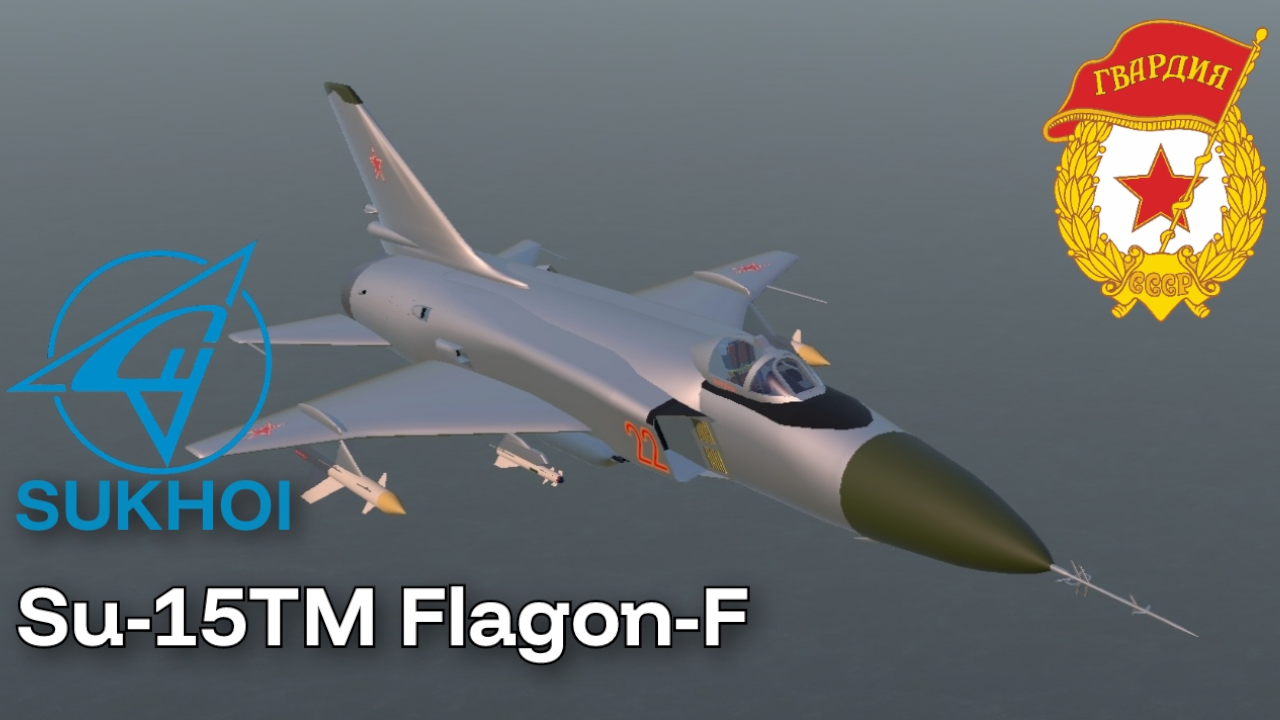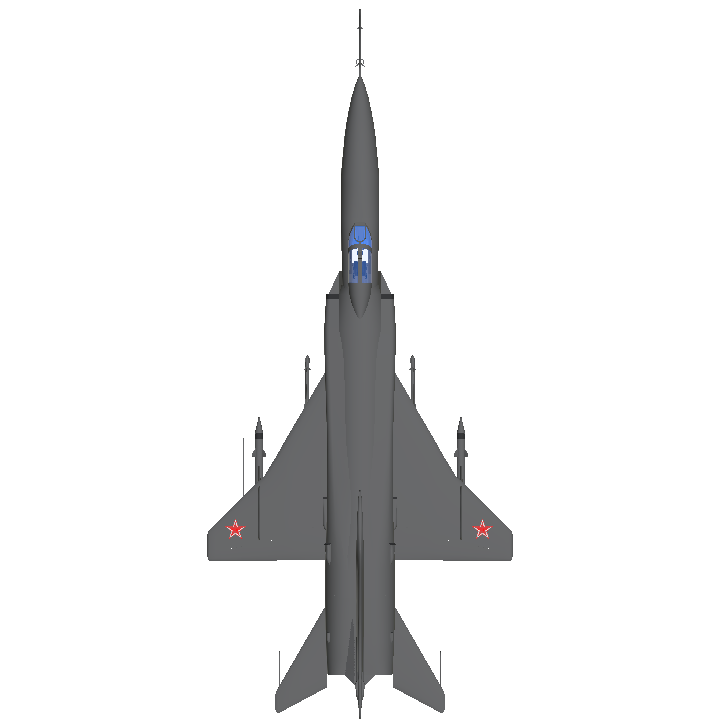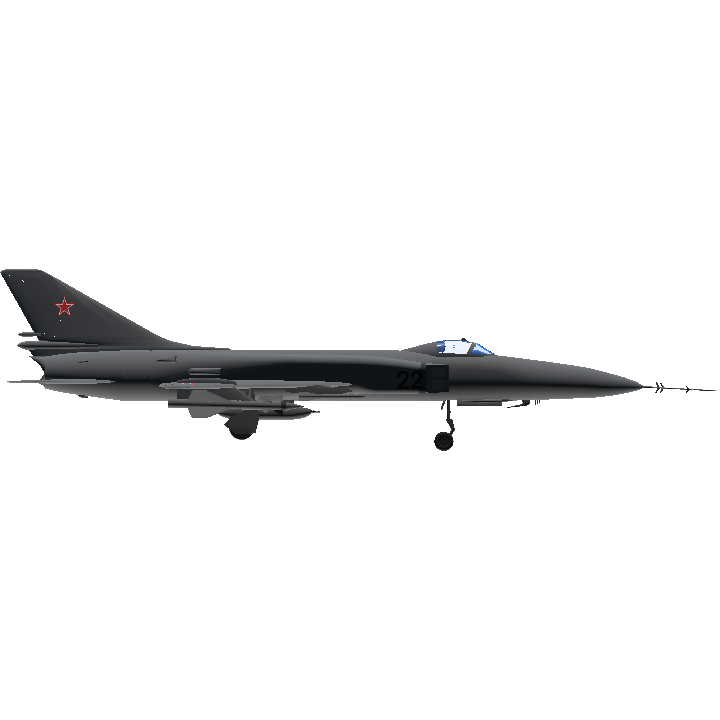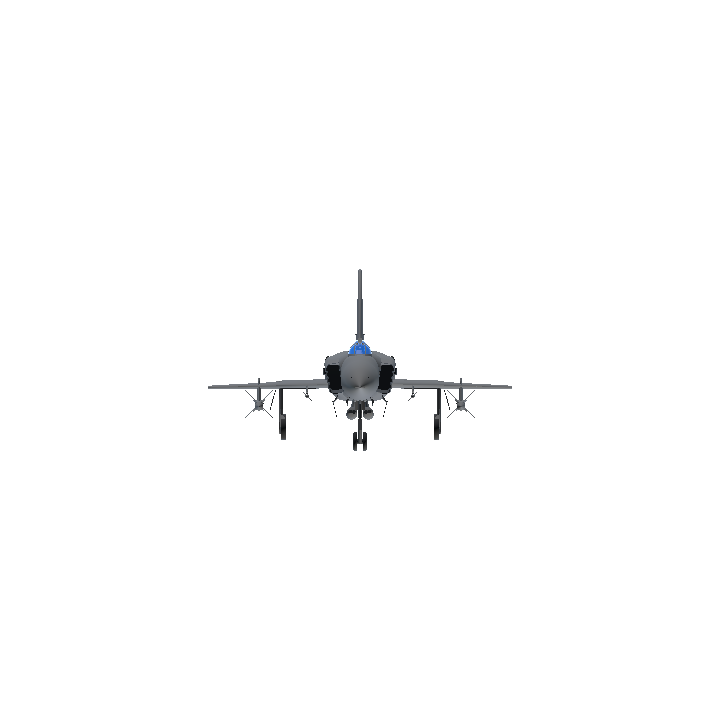The Sukhoi Su-15 (NATO reporting name: Flagon) is a twinjet supersonic interceptor aircraft developed by the Soviet Union. It entered service in 1965 and remained one of the front-line designs into the 1990s. The Su-15 was designed to replace the Sukhoi Su-11 and Sukhoi Su-9, which were becoming obsolete as NATO introduced newer and more capable strategic bombers.
OPERATIONAL HISTORY
The Su-15 formed a significant part of the V-PVO's interceptor force, and was designed to intercept easier targets such as the American B-52 and U-2 and the British V bombers, leaving the more difficult targets such as the XB-70 and B-58 to the faster MiG-25P. The Taifun radar of the Su-15TM was optimised for counter-countermeasure operation, as opposed to range. As an interceptor, the task of the Su-15TM was to fly under autopilot, using GCI commands sent through the datalink. The radar would only be turned on as the interceptor approached the target in order to provide targeting parameters for the radar homing K-8/R-8/R-98 missiles, the high power of the radar allowing it to 'burn through' enemy ECM signals. If all else failed, IR homing versions of the K-8 would provide a last opportunity to shoot down the intruder, along with any gun pods the Su-15 might be carrying.
The Su-15 was optimised for the high-altitude interception role with its fast climb-rate and high speed at high altitude but lacked look-down/shoot-down capability, even with the Su-15TM's more sophisticated Taifun radar. This eventually led to the MiG-23P, which did have look-down/shoot-down capability, becoming the preferred asset of the V-PVO, especially once NATO switched to low-level penetration tactics. Even so, the Su-15 remained an important part of the V-PVO until the fall of the Soviet Union.
As one of the V-PVO's principal interceptors, the Su-15 was involved in several attacks on foreign aircraft that inadvertently crossed into Soviet airspace:
In 1978, Korean Air Lines Flight 902 veered into Soviet airspace and was attacked over Murmansk by a PVO Su-15. Although the civilian aircraft survived the missile hit, two passengers were killed, and the damaged plane subsequently made a forced landing on a frozen lake.
In 1981, a Soviet Su-15, from a base in Georgia, collided with a Canadair CL-44 of Transporte Aéreo Rioplatense (TAP; Argentinian airline), killing the three Argentinians and one Briton on board. The TAP aircraft was allegedly transporting weapons bought secretly from Israel by Iran, when it allegedly strayed into Soviet airspace. While some aviation experts believed the collision was accidental, the Soviet Su-15 pilot claimed that he had been deliberately rammed.
In the Korean Air Lines Flight 007 incident in 1983, a South Korean Boeing 747 was fired upon near Moneron Island, after it veered into restricted Soviet airspace, by a Su-15TM based on Sakhalin, with the 747's control surfaces having been disabled as a result of a direct hit to the aircraft's tail. The crippled airliner then crashed into the Sea of Japan off the coast of Moneron, killing all 246 passengers and 23 crew.
The Su-15 was also credited with shooting down five reconnaissance balloons sent to spy on Soviet territory in 1975.
Although it was produced in large numbers (1,290 of all types), the Su-15, like other highly sensitive Soviet aircraft, was never exported to the Warsaw Pact or any other country due to its sophisticated systems. Some Su-15 were reported to be deployed in Egypt in 1972 but were used with Soviet crews. At one point, the Su-15 was considered for use as a strike fighter, but proved to be too specialised as an interceptor to be used in that role.
After the fall of the Soviet Union, the Su-15 was abruptly retired from the new Russian Air Force in 1993 to comply with the Treaty on Conventional Armed Forces in Europe. Most were hastily scrapped in favour of more advanced interceptors, including the Su-27 and MiG-31, but some are in reserve storage for emergency use. In Ukraine, the last Su-15s (at Kramatorsk and Belbek) were withdrawn from use in 1996.
Source:
Wikipedia
ARMAMENTS
2× GSH 23-2 (UPK-23 Gun Pod)

2×R-60 (AA-8 ‘Aphid’)
Type: Heat-seeking
Range: 4km

2×K-8 (AA-3 'Anab')
Type: semi-active radar
Range: 23km

SCREENSHOOTS






FLIGHT INSTRUCTIONS ARE AVAILABLE IN THE GAME
Happy New Year to you all
I hope you all have a great year today and tomorrow, and if It was a rough year before, just remember that it all will pass.
See you later 😁
Specifications
Spotlights
- Trainzo 2 months ago
- RicardoACE 19 days ago
- DTMF 2 months ago
- Rafalemmm 2 months ago
- TheCommentaryGuy 2 months ago
- WinsWings 2 months ago
- Rjenteissussy 2 months ago
- ChihiroFujisaki 2 months ago
- MrCOPTY 2 months ago
General Characteristics
- Created On Android
- Wingspan 31.0ft (9.5m)
- Length 73.3ft (22.3m)
- Height 18.5ft (5.6m)
- Empty Weight N/A
- Loaded Weight 26,078lbs (11,829kg)
Performance
- Power/Weight Ratio 2.352
- Wing Loading 60.8lbs/ft2 (296.7kg/m2)
- Wing Area 429.2ft2 (39.9m2)
- Drag Points 7
Parts
- Number of Parts 703
- Control Surfaces 5
- Performance Cost 2,716





I almost forgot, thx for the upvote and I hope you enjoy the plane.
This is not my final goodbye (maybe) I'm just a bit busy and moody with my big SP project, I think I will wait for a new and better device before continuing those projects because every time I make a replica it always has a lot's of parts or it's just simply very big make my device want to turn into a C4.
The Su shot down the Korean Airline 747
It's a shame, we will miss your beautiful creations. Your Sukhoi 15 is just awesome .
GREAT BUILD and GREAT SCREENS . I love it .
Nice
Stunning!